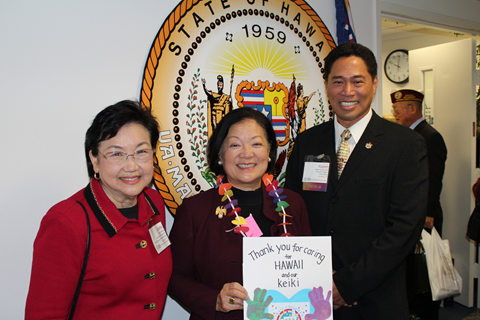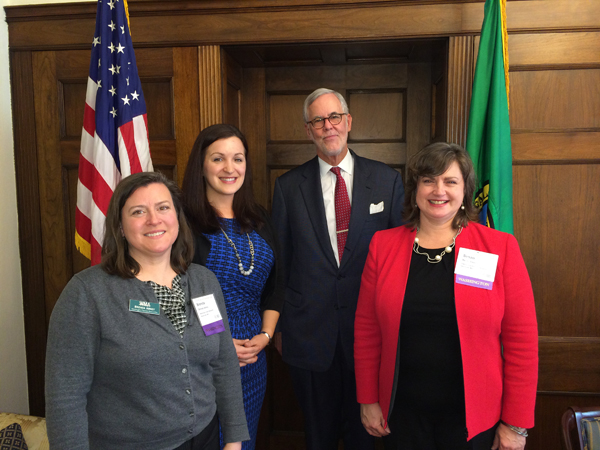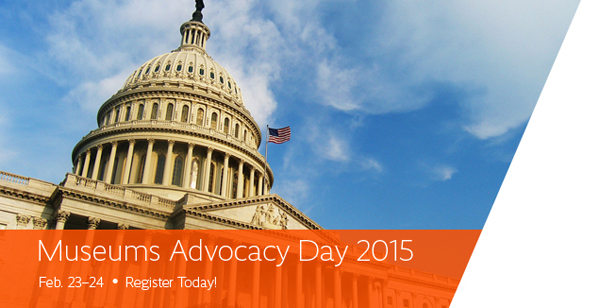By Lauren Valone
 Museums are just beginning to put their programming, marketing, and outreach into place for the coming year. Strategic plans have been formed and are now into the implementation phase. Museums reach out to local constituents, schools, associations, other non-profits, and many other groups in order to create mutually beneficial plans. However, local, state, and federal governments are less often included in that mix of potential partners. As budgets are in flux, advocating about the importance of museums is critical. Likewise, partnering with and employing government agencies is invaluable to any museum’s success.
Museums are just beginning to put their programming, marketing, and outreach into place for the coming year. Strategic plans have been formed and are now into the implementation phase. Museums reach out to local constituents, schools, associations, other non-profits, and many other groups in order to create mutually beneficial plans. However, local, state, and federal governments are less often included in that mix of potential partners. As budgets are in flux, advocating about the importance of museums is critical. Likewise, partnering with and employing government agencies is invaluable to any museum’s success.
With the American Alliance of Museum’s (AAM) Museums Advocacy Day 2015 just around the corner, Gail Ravnitzky Silberglied, Vice President, Government Relations & Advocacy at AAM, offers some stories, lessons, and tips for advocating about museums.
You have had experience advocating for many different types of businesses and non-profits. How is advocacy different between museums and other organizations? How is it similar?
Museums are in an excellent position to advocate because we have incredible stories to tell and images to share, something that many other types of organizations could only wish for. We can invite our elected officials to witness first-hand the public programming, the conservation work, and teacher trainings. These experiences will help our legislators form more accurate impressions about how museums are serving their communities in important ways. Like other organizations, however, museums must understand that if they fail to tell these stories and demonstrate how essential they are, we run the risk of being misunderstood or simply overlooked.
What are some of the most pressing issues for museums today that should be advocated for?
First and foremost, we need to be appreciated and understood for what we are and what we do—that we are reaching all segments of society, that we are providing opportunities for lifelong learning, that we are changing lives, that we are keepers of cultural heritage, and that we are economic engines and community anchors.
As for public policy, preserving the full scope and value of the charitable deduction is the most critical item, along with other charitable giving incentives. Since charitable donations make up a full one-third of museum budgets, we have to be vigilant in the fight for the deduction to continue in its current form.
We have to calculate and share our economic impact. AAM has created a simple template and we urge every single museum to share this vital information with their elected officials. We find this simple action to be very effective with lawmakers.
And of course we continue to advocate for federal funding for IMLS, NEA, NEH, NSF, historic preservation programs, the National Archives, the National Park Service, and other important programs.
How is the future of politics going to affect museums?
Elected officials will continue to emerge, and many will rise through the ranks from town council, city hall, and the state assembly to Congress, the governor’s mansion, and even the White House. Each one will be faced with literally hundreds of issues and we must be sure they understand the vital role of the museums they represent. Museums will need to continue telling their story—and defining themselves as essential community assets—particularly in an elected official’s early political career.
Getting involved with advocacy can seem like a daunting task. What are the best ways to get involved with museum advocacy?
Be sure you are receiving AAM Advocacy Alerts, and take action when we ask. Our tools and resources make it very easy to engage.
One of the easiest ways to connect with elected officials is on social media. It can give you a direct connection to the political process, and you can learn valuable information about policymakers’ priorities. Remember, you don’t have to like your elected officials to “like” your elected officials!
Finally, many of our advocates tell us that coming to Museums Advocacy Day was pivotal for them. It gave them to tools, the confidence, the access, and the messaging to make their case. And 84% told us that they took these lessons back home and are now making the case on the state and local level. We are very proud of that!
What are some tips for communicating with politicians?

Be prepared (with an elevator speech, with information about your elected officials, etc.) and then craft a winning message by matching his/her interests with something your museum is involved with. (If you already work with donors, this formula may sound very familiar!)
Never write off elected officials as non-supporters. If they aren’t with you on one issue, they may very well support you on the next issue. In fact, they may be looking for an initiative to work on with you. You might start by having an introductory meeting and offering your space as a venue for a public event.
Keep in mind that politicians have a million issues on their plates, and are eager to earn positive praise, especially if you do so publicly. Consider ways to involve them in your events, keep them posted on your programs and invite them to observe one of your programs in action. This will surely be memorable for them!
Finally, never underestimate the power of their staff. If you can cultivate a relationship with an elected official’s staff, you can often turn that person into an internal advocate who can help you navigate the office and maximize your effectiveness.
AAM has created great Advocacy Resources and useful Museum Facts. How can individual museums use these resources to brand themselves for their local and state governments?
Public officials at all levels of government appreciate brevity. I think every museum can create a one- or two-page impact statement right away and I guarantee this will impress your elected officials. Start with the AAM economic impact template or the AAM educational impact template, consider creating an infographic, add your logo and a photo and—voila!—there you have the perfect introduction to your museum. Send us your finished products—we’d love to share them on the AAM website. See what others have created.
What are some lessons for museum professionals that you learned from your years working on Capitol Hill as a Legislative Director and Chief of Staff?
I think the most important thing is to recognize the power that you have as a constituent, especially one that works for an essential community asset. Elected officials desperately want to know what’s going on in their communities and they will be grateful for any opportunity to engage with constituents. So know your power.
And tell your stories. Some of the most memorable meetings I had with constituent groups involved a community member telling his/her story about why the community asset (a community health clinic, a library, a job training center, etc.) issue was important. This kind of third-party validation is very effective. Your trustees are also a secret weapon because they are very connected and articulate.
I also liked getting to see programs in action—it really helped me understand what was going on in the community. The best thing you can do to get started is to invite them to visit your museum, and to witness the magic that happens there. It could be a program for veterans, a youth development program for at-risk teens, a program for families dealing with Alzheimer’s. Think of the program that is most popular with your visitors—that’s probably what they’d most like to see.
Would you like to share any other lasting thoughts about advocacy or Museums Advocacy Day 2015?
Ask those who have attended Museums Advocacy Day about their experience. Many will tell you it was transformational, and several have shared their success stories with us. I want to personally invite all WMAers to register for Museums Advocacy Day 2015. And if you are from any of these states—Hawaii, Idaho, Nevada, Utah, and Washington, which are traditionally underrepresented at the event—we need you more than ever. Thanks to WMA’s generous support of this field-wide event, you can register for free!
 Museums Advocacy Day 2015 will be held on February 23-24 in Washington, DC. Learn more about this important event here.
Museums Advocacy Day 2015 will be held on February 23-24 in Washington, DC. Learn more about this important event here.
As a sponsor of the event, Western Museums Association members receive a FREE registration to Museum Advocacy Day 2015. Please contact us for details and to obtain the code for your FREE registration.








Add new comment